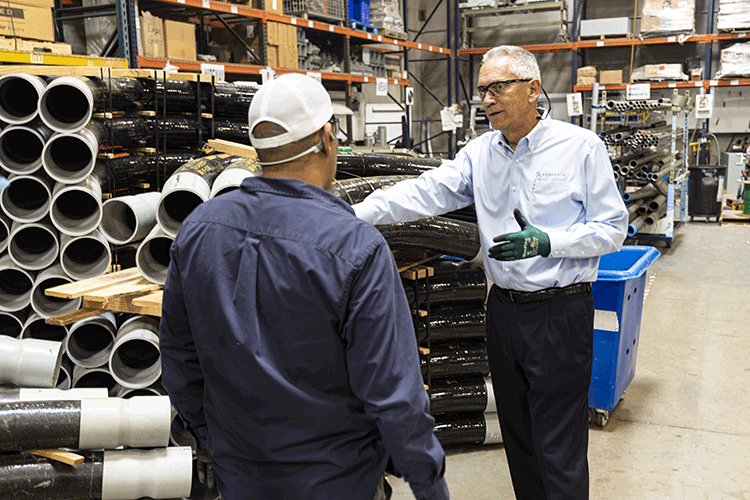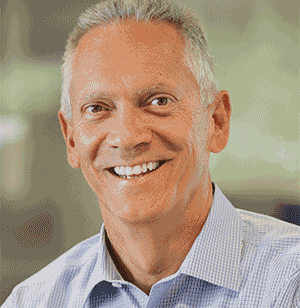The 2022 CEOs Who 'Get It'

Mike Greenawalt
CEO
Rosendin
Tempe, AZ

Rosendin, headquartered in San Jose, CA, is employee-owned and one of the largest electrical contractors in the United States, employing over 7,000 people, with revenues averaging $1.8 billion. Established in 1919, Rosendin remains proud of our more than 100 years of building quality electrical and communications installations and value for our clients, but, most importantly, for building people within our company and our communities.
Describe your personal journey to becoming a CEO who “gets it.”

I take Rosendin’s commitment to safety on a personal level. As the company’s CEO, leading a workforce of approximately 7,000 workers across the country, I understand that, in the construction industry, safety extends beyond gloves, glasses and harnesses. Today, many workforce incidents stem from anxiety, depression, stress, anger and financial concerns.
Having witnessed co-workers suffer life-changing injuries in my time in this industry, I helped develop Rosendin’s corporate safety policies, including a “stop work” card, “5Why” accident investigation form and pre-task planning policy to identify potential hazards. These efforts earned Rosendin the Grand Award for Construction Safety Excellence at the Associated General Contractors Convention in 2018.
When I was promoted to CEO in 2020, I supported the implementation of an extensive program to raise awareness of the importance of creating a safe work environment during Construction Safety Week. These annual programs include daily activities and targeted themes spanning mental health, diversity, equity and inclusiveness as part of safety at work to personal protective equipment and fall prevention. I also grew the safety team and launched the Craft Empowerment Program to build project communication between the field and project management. CEP members wear a different color safety vest and are available to answer worker questions about safety, quality and production, then report issues to the project manager to give all employees a voice. In addition, I provided resources for a fall safety video that uses ballistic dummies to demonstrate the impact of a fall on the human body.
My dedication to a culture of safety also prompted the design of a safer tool that drastically reduced injuries. In 2017, I noticed lighter portable band saws created unexpected safety risks that resulted in severe injuries on jobsites. I assembled a team that came up with the idea for a two-handed band saw with safety features that could not be overridden. I convinced DEWALT to manufacture the saw, got Rosendin to purchase it and encouraged DEWALT to make it publicly available to improve workplace safety across the industry. Today, that saw is in full production and available for public purchase.
I have dedicated more than four decades to developing commercial and industrial construction, innovating safety protocols, and shaping the Valley skyline. I started at Rosendin’s Tempe office 18 years ago as the southwest division manager in 2002, focusing on developing highly effective operations using creative solutions based on innovative technology, employee development and better safety standards.
As a Sunnyslope High School graduate, I have come a long way since becoming an IBEW electrical apprentice and building the Palo Verde Nuclear Power Plant. That experience has inspired me to tackle impactful projects while increasing efforts to keep workers safe and advancing industry standards for all.
What is the biggest obstacle to safety at your organization, and how do you work to overcome it?
One of the most significant challenges to safety within Rosendin is getting the new, unskilled workforce up to speed to meet the industry demand for construction. We have implemented several processes to overcome this challenge. These include our comprehensive onboarding process that delivers training on hazard recognition, lockout/tagout, one-line drawings, mobile equipment, tool safety, fall protection and how not working safely will affect their future in retirement. We explain what is in it for them in the long term and why working safely is essential.
Why is safety a core value at your organization?
Safety is a value at Rosendin, a value that we don’t want our employees to compromise for any reason. We believe that every employee deserves a safe working environment, and no one should have to put themselves in harm’s way or be injured while making a living for themselves and their family. As a company, Rosendin has taken and committed to a Culture of CARE. We are taking action to ensure every employee at our company has the opportunity to reach their full potential by building a culture that is diverse, safe, welcoming and inclusive.
When Rosendin accepted safety as a core value, it initiated a change within us that has become a part of the way we think and a part of our culture, as it touches everyone who comes in contact with us. We at Rosendin have a safety message we like to share with everyone. We believe everyone deserves a safe place to work. Everyone is a part of our safety culture and helps to create an environment that is injury, illness and impact free. I-3 Free is our behavior-based safety program within Rosendin to spread the message that no one should be injured while working to provide a living for themself as well as their family.
Accountability is one of the keys to creating this environment, a culture in which people choose to do the right thing because it’s the right thing. They don’t have to be told to make the right choices; they want to because they know that’s what it takes to work injury free. Our craft folks show their accountability by participating in everything from safety meetings, safety committees, the PTP and Stretch and Flex process to going home each day injury free for themselves and their families. They are even sharing our I-3 Free culture with their families at home.
How do you instill a sense of safety in employees on an ongoing basis?
I empower employees to make the right, safe choices endorsed in a “stop work” card. I also share my personal story in the new-hire video of an incident that occurred early on in my career, and I am intimately involved in Safety Week, including videos that capture my support for safety and are distributed companywide.
How does your organization measure safety?
We use an auditing program to provide real-time feedback on safety audits. Our safety professionals, field management and project management perform these safety audits. These audits are then discussed with the crews to find ways to eliminate hazards and develop safety action plans if needed. When a person performs an audit, they are not just looking for negative items, they are also looking for positive items to share with our teams. This report is sent out each week to see the top 10 negative and top 10 positive observations. We also have our safety program evaluated every year by a third party to ensure we are current with all our programs. In addition, we send out a weekly corporate summary to all operations showing the past week’s safety results from each region and division. To recognize teams, we also have a quarterly safety trophy that is presented to the division with the best safety record.
What role does off-the-job safety play in your organization’s overall safety program?
Job safety plays a significant role in our overall safety program, as we want our employees to take the training they have received at work and apply those same practices at home. Examples include ladder safety, electrical safety, mental and wellness practices, tool safety, and community involvement.
What have you done to support employee mental health and well-being within your organization?
Rosendin has developed and rolled out a craft empowerment program to give our craft a voice and to build project communication between the field and project management. Members of the CEP are working field employees identified by wearing a different color vest. Each member is available to answer questions regarding safety, quality, production and quality of life on the project. Every two weeks, members of the CEP meet with the project manager to discuss what they have seen and heard from our craft employees. They follow an agenda with questions such as: What are we doing well? What do we need to improve on? What bothers them? This Rosendin program gives all our field employees a voice, and we listen.
Post a comment to this article
Safety+Health welcomes comments that promote respectful dialogue. Please stay on topic. Comments that contain personal attacks, profanity or abusive language – or those aggressively promoting products or services – will be removed. We reserve the right to determine which comments violate our comment policy. (Anonymous comments are welcome; merely skip the “name” field in the comment box. An email address is required but will not be included with your comment.)


